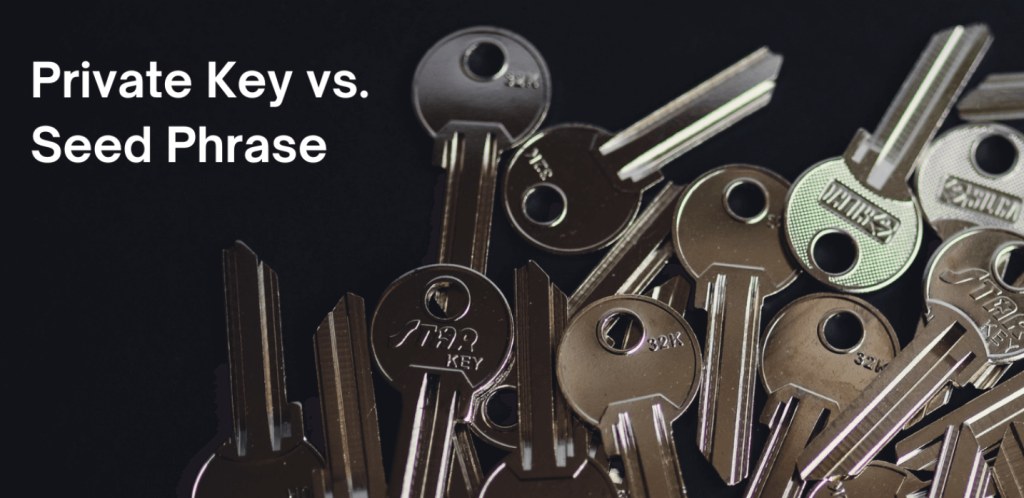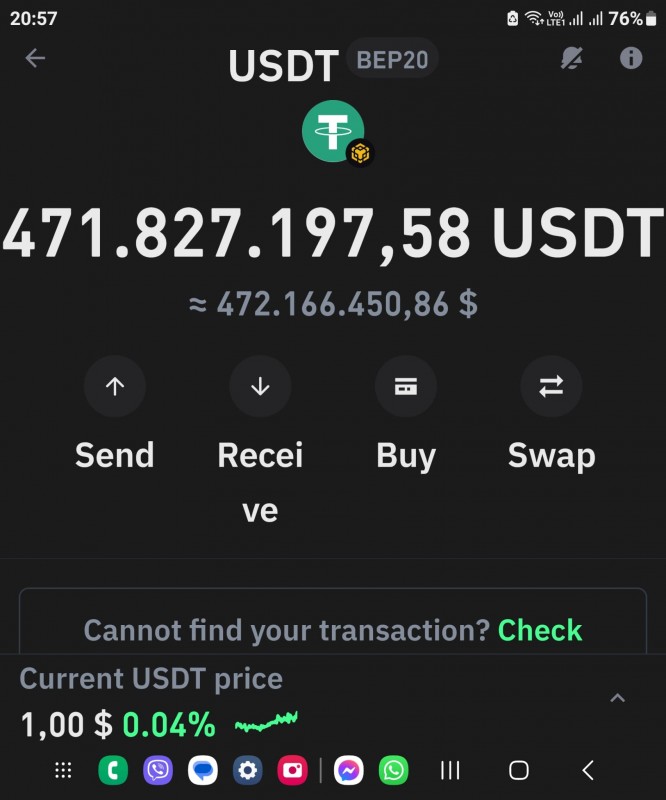Table of Contents
TogglePrivate Key to Seed Phrase: Understanding the Conversion Process
In the world of cryptocurrency, private keys and seed phrases are fundamental concepts that ensure secure access to your digital assets. If you’re wondering how a private key relates to a seed phrase—or even how to convert one to the other—this article will break down the process in an easy-to-understand manner.
What Are Private Keys and Seed Phrases?
Before diving into the conversion process, it’s essential to understand what these terms mean.
Private Key
A private key is a randomly generated alphanumeric string that allows you to sign transactions and access funds in a specific cryptocurrency wallet. It acts as the password to your wallet and must be kept secret.
Seed Phrase
A seed phrase, also known as a recovery phrase, is a human-readable representation of your private key. Typically consisting of 12, 18, or 24 words, a seed phrase allows you to restore your wallet and regain access to your private keys in case of device loss or failure.
Why Convert a Private Key to Seed Phrase?
Private keys are challenging to remember and manage, especially for non-technical users. Seed phrases simplify this by translating the complex private key into a set of easy-to-write and store words. Additionally, seed phrases are widely supported by most modern wallets, making them a standard in crypto security.
The Conversion Process
The process of converting a private key to a seed phrase involves cryptographic algorithms and standards such as BIP-39 (Bitcoin Improvement Proposal 39). Here’s a step-by-step breakdown:
Generate a Private Key:
Most cryptocurrency wallets automatically generate private keys. For advanced users, tools like BitAddress or MyEtherWallet can be used.Use a BIP-39 Tool or Library:
Open-source tools and libraries like Ian Coleman’s BIP39 Tool can convert your private key into a mnemonic seed phrase. These tools ensure compatibility with most wallets.Follow Security Best Practices:
During conversion, ensure you’re working offline and on a secure device to prevent exposing sensitive information. Once the seed phrase is generated, store it in a safe and secure location, such as a hardware wallet or a fireproof safe.Verify Wallet Compatibility:
Not all wallets use the same cryptographic standards. Ensure the seed phrase is compatible with your intended wallet before proceeding.
External Resources to Learn More
- Ledger Academy: A comprehensive resource on private keys, seed phrases, and wallet security.
- Binance Blog: Insights into crypto wallet security and best practices.
- CoinDesk Guide: Beginner-friendly articles about cryptocurrencies and blockchain technology.
Final Thoughts
Understanding the relationship between private keys and seed phrases is crucial for managing cryptocurrency securely. While the conversion process may seem technical, tools like BIP-39 libraries make it accessible to most users. Always prioritize security by keeping your private key and seed phrase offline and in a secure location.
Cconvert Private Key To Seed Phrase
How to Convert Private Key to Seed Phrase: A Step-by-Step Guide
Cryptocurrency security is a critical concern for investors and blockchain enthusiasts. Understanding the intricacies of private keys and seed phrases is essential for safeguarding your digital assets. This guide explores how to convert a private key into a seed phrase, a process that can enhance security and improve ease of use.
What Are Private Keys and Seed Phrases?
Before diving into the conversion process, let’s clarify what private keys and seed phrases are:
- Private Key: A private key is a string of alphanumeric characters that provides access to a specific cryptocurrency wallet. It is crucial for signing transactions and proving ownership of assets.
- Seed Phrase: A seed phrase, also known as a recovery phrase, is a human-readable list of 12 to 24 words. It acts as a backup to regenerate the private keys associated with your wallet.
Seed phrases are widely used due to their user-friendly nature and compatibility with hierarchical deterministic (HD) wallets.
Why Convert Private Key to Seed Phrase?
There are several reasons why converting a private key to a seed phrase can be beneficial:
- Enhanced Backup Options: Seed phrases are easier to write down and store safely compared to complex private keys.
- Ease of Wallet Recovery: Most wallets support seed phrases for quick recovery, making them more versatile.
- Improved Security: Seed phrases are often stored offline, reducing the risk of cyber threats.
Prerequisites for Conversion
To convert a private key to a seed phrase, you need the following:
- A secure cryptocurrency wallet that supports seed phrases.
- Your private key.
- Access to tools or software designed for key-to-seed conversion.
Step-by-Step Process
1. Choose a Wallet That Supports HD Wallets
Select a wallet that adheres to BIP-39 or BIP-44 standards. Examples include Ledger, Trezor, and Electrum.
2. Access the Key Conversion Feature
Some wallets or tools offer an integrated feature to convert private keys to seed phrases. If your wallet doesn’t have this feature, you can use third-party tools like Ian Coleman’s BIP-39 Tool. Ensure the tool is accessed offline for maximum security.
3. Input Your Private Key
Enter your private key into the designated field. Be cautious when handling your private key to avoid exposing it to malicious actors.
4. Generate the Seed Phrase
Once the private key is entered, the tool or wallet will generate a corresponding seed phrase. This phrase represents your wallet’s cryptographic state in a more user-friendly format.
5. Secure Your Seed Phrase
Write down the seed phrase on paper or a durable medium. Avoid storing it digitally to minimize exposure to hacking or phishing attempts.
Best Practices for Security
- Use Hardware Wallets: Hardware wallets provide the highest level of security for storing seed phrases and private keys.
- Verify the Source: Ensure that any tools used for conversion are reputable and accessed offline.
- Create Multiple Backups: Store copies of your seed phrase in separate, secure locations.
- Avoid Sharing: Never share your seed phrase or private key with anyone.
Conclusion
Converting a private key to a seed phrase is a practical step for enhancing the security and usability of your cryptocurrency assets. By following the steps outlined above and adhering to best practices, you can protect your investments against potential threats.
For more insights on cryptocurrency security, check out these resources:
By implementing the strategies shared in this guide, you can ensure a safer and more convenient experience in managing your crypto assets.
Private Key vs Seed Phrase

Private Key vs Seed Phrase: What’s the Difference?
Cryptocurrency has revolutionized the way we think about money, offering unmatched security and decentralization. Two key concepts crucial to understanding how crypto wallets work are private keys and seed phrases. While these terms are often used interchangeably, they serve different purposes. Let’s break them down.
What is a Private Key?
A private key is a randomly generated alphanumeric string that allows you to access and control your cryptocurrency. It acts as the digital signature for transactions, proving ownership of the associated wallet.
Key Characteristics:
- Confidentiality: Should never be shared. Anyone with your private key can access your funds.
- Format: Typically a 64-character hexadecimal string.
- Usage: Used to sign transactions and prove wallet ownership.
What is a Seed Phrase?
A seed phrase (or recovery phrase) is a human-readable representation of your private key. It’s typically a sequence of 12, 18, or 24 words generated when you create a cryptocurrency wallet.
Key Characteristics:
- Backup Tool: Acts as a master key to regenerate private keys for your wallet.
- Memorability: Easier to write down and remember than a long alphanumeric string.
- Universal Standard: Compatible with most wallets using the BIP-39 standard.
Key Differences inPrivate Key and Seed Phrase
1. Format:
A private key is a long, complex string of numbers and letters (hexadecimal), while a seed phrase consists of simple, easy-to-remember words. This makes seed phrases much more user-friendly, especially for non-technical users.
2. Usage:
Private keys are used directly to sign cryptocurrency transactions and prove ownership of your wallet. In contrast, seed phrases are primarily used as a backup tool. If you lose access to your wallet, you can use your seed phrase to regenerate all private keys and regain access to your funds.
3. Human Readability:
Seed phrases are designed to be human-readable. It’s far easier to write down and store 12–24 words than to manage a long string of alphanumeric characters.
4. Security Risk:
Both private keys and seed phrases are critical for security. However, a private key represents a single point of failure: if it’s lost or stolen, you lose access to your funds. A seed phrase is safer when stored securely because it allows you to recover all your private keys in case of device loss.
How Are They Related?
A seed phrase is essentially a simpler way to back up your wallet. The wallet uses the seed phrase to derive private keys mathematically, which in turn control access to your funds.
Best Practices for Security
- Store Offline: Write down your private key or seed phrase and store it in a secure, offline location.
- Avoid Sharing: Never share your private key or seed phrase with anyone.
- Use a Hardware Wallet: For added security, store your cryptocurrency in a hardware wallet.
- Test Recovery: Periodically test recovering your wallet using the seed phrase on a different device.
Why This Matters
Understanding the difference between private keys and seed phrases is vital for crypto security. Losing either can result in permanent loss of funds, so proper storage and backup are critical.
External Resources
By securing your private key and seed phrase properly, you ensure your cryptocurrency remains safe from theft or accidental loss.
Generate Seed Phrase From Private Key

How to Generate a Seed Phrase from a Private Key
In the world of cryptocurrency, private keys and seed phrases play a crucial role in securing digital assets. While private keys directly grant access to your funds, seed phrases provide a more human-readable backup option. In this article, we’ll discuss how you can generate a seed phrase from a private key and the steps involved to ensure your crypto remains secure.
What is a Private Key and a Seed Phrase?
Private Key
A private key is a randomly generated string of characters that grants access to your cryptocurrency wallet. It’s a critical element in ensuring ownership and access to your digital assets. Losing your private key can result in losing access to your funds.
Seed Phrase
A seed phrase (or recovery phrase) is a series of 12, 18, or 24 words derived from a private key. It’s used as a backup to restore your wallet in case of loss or hardware failure. Seed phrases are generated following the BIP-39 standard, which ensures compatibility across most modern cryptocurrency wallets.
Why Generate a Seed Phrase from a Private Key?
Generating a seed phrase from a private key offers several advantages:
Ease of Use: Seed phrases are easier to write down and remember compared to a long private key.
Cross-Wallet Compatibility: With a BIP-39-compliant seed phrase, you can restore your wallet across various platforms.
Secure Backup: It’s a secure way to store your private key in case of device loss or damage.
Steps to Generate a Seed Phrase from a Private Key
Follow these steps to generate a seed phrase from a private key:
1. Use a Trusted Tool
To generate a seed phrase, use a reliable and secure tool. Popular options include:
Open-source libraries like bip39 in Node.js
Important: Always download offline versions of such tools or use air-gapped devices to avoid exposing your private key to potential online threats.
2. Input the Private Key
Load the tool and input your private key. Ensure that you’re entering it in the correct format required by the tool.
3. Generate the Seed Phrase
The tool will derive the corresponding seed phrase from your private key using the BIP-39 algorithm. The number of words in the seed phrase will depend on the entropy of the private key.
4. Verify the Seed Phrase
To ensure accuracy, verify that the generated seed phrase can restore the same wallet. Use your wallet software to test the restoration process.
5. Store Securely
Write down your seed phrase on paper and store it in a secure location, such as a fireproof safe. Avoid storing it digitally to minimize the risk of hacking.
Best Practices for Security
Never Share Your Private Key or Seed Phrase: Sharing these gives others complete access to your funds.
Use Offline Tools: Generate your seed phrase in an offline environment to avoid exposing sensitive data.
Regular Backups: Periodically check and update your backup storage methods.
Test Restorations: Ensure you can restore your wallet using the seed phrase before relying on it as a backup.
Risks of Generating Seed Phrases
While the process is straightforward, generating a seed phrase from a private key comes with risks. If you’re not careful, you could expose your private key to malicious actors. Always use trusted, offline tools and double-check the integrity of the tools you use.
Additional Resources
Learn more about BIP-39 Standards
Explore wallet recovery options using seed phrases here
Conclusion
Generating a seed phrase from a private key is a valuable skill for cryptocurrency enthusiasts who prioritize security and ease of use. By following the steps outlined above and adhering to security best practices, you can safeguard your digital assets effectively. Always remember to keep your private key and seed phrase secure to avoid any loss or theft.





